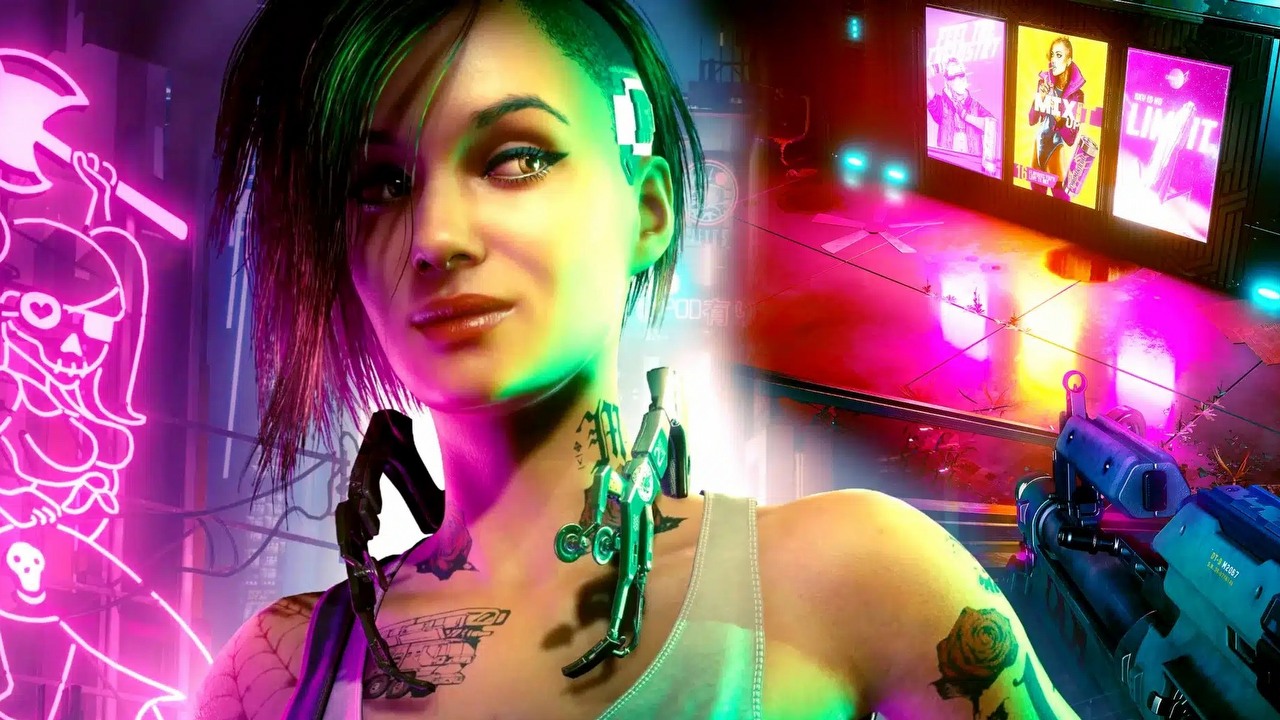Sins and Mistakes of Cyberpunk 2077; Dev Explains What Went Wrong
The non-linearity in Cyberpunk 2077 disappointed some players. Designer Miles Tost from CD Projekt Red explained what was the reason and what lessons the Polish developers learned from it.

To the surprise of (we hope) no one, the presence of CD Projekt Red on GDC 2023 did not translate into announcements for gamers. After all, it's a conference for developers to discuss game design and related issues. For example, why Cyberpunk 2077 disappointed people who were hoping for less linearity than in The Witcher 3: Wild Hunt.
The above issue was the subject of a separate panel hosted by Miles Tost, who was also the level designer of the third Witcher. Presentation titled "Level Design Summit: Benefits of Missing out: What Cyberpunk 2077'Taught Us About Non-Linear Level Design was an opportunity for the developer to say what went wrong in the developer's latest game.
A recording of the presentation is not available, but IGN editors were among the panelists at the GDC 2023.
The (non)linearity of Cyberpunk 2077

Premiere of Cyberpunk 2077 in late 2020 disappointed many gamers. Complaints were mainly about technical issues (especially performance on PS4 and XOne consoles), but - unfortunately - the gameplay also raised some concerns.
A big disappointment was the linearity in Cyberpunk 2077, of which CD Projekt was aware. This was mentioned, among others, by Pawel Sasko in 2021, as well as two months ago (via Reddit), partly understanding player complaints, but also not entirely agreeing with them.
Narrative too strong, choices not special enough
Miles Tost partially echoed what his colleagues said during the panel at GDC 2023, but also expanded on the topic considerably. He mentioned that when he was commissioned to design levels, he was advised to create locations with multiple styles of gameplay in mind, both subtle and straightforward. This was, in the designer's words, "crazy, but also damn exciting."
Why then, according to gamers, Cyberpunk 2077 gives the impression of being more linear than many older games? Tost blames this on... CD Projekt Red's emphasis on narrative, which the players shouldn't miss. In practice, this meant that the developers tried to include a "generic" path: one that would be hard to miss and would remain accessible regardless of the player character specialization.
"We pride ourselves on telling stories. We didn't want the player's lack of forethought to prevent them from enjoying the narrative."

The problem is that the players - as seems obvious in retrospect - often took the line of least resistance, choosing precisely this obvious solution. At the same time, the need to "narrow down" the plot to a certain point meant that the paths all too often converged.
Fact, each choice brought with it different interactions between characters or unique dialogues. Only that once the various paths converged, these "rewards" were so numerous, and their impact on the narrative so modest, that in the end it was hard to see them as anything "special."
Three lessons from Cyberpunk 2077
It was the last word that Miles Tost found crucial when discussing the lessons learned from problems with non-linearity in Cyberpunk 2077. The designer listed three basics that, if possible, developers should keep in mind (although he stressed that one should always take allowances for design assumptions): distance, isolation / exclusivity and "justification."
In a nutshell: the idea is that each path should be clearly separate from the others and presented as an isolated path with "something special" and worth spending more time to see how the game will turn out after making a different decision. The developers are to be inspired by both games in the Dishonored series.
In practice, this could translate into clearly separated "entrances" to paths, limiting the player's ability to change their decisions (e.g., through linear passages) or what they can see, and - of course - rewarding them with unique scenes, encounters, etc. At the same time, it's a chance for developers to put more emphasis on certain playstyles (for example, putting a menacing adversary in the way of players to force them to sneak).
So much for theory, which - as is usually the case with assumptions - sounds promising, but has yet to be tested in practice. Whether the lessons learned from the shortcomings of Cyberpunk 2077 will translate into more "non-linear" worlds, we will only find out when CD Projekt RED shows off its next projects.
- Cyberpunk 2077 is still a gold mine for CD Projekt Red. It already beat The Witcher 3 and isn't slowing down
- 5 years after its release, Cyberpunk 2077 is making millions again. That's thanks to one risky decision
- Cyberpunk 2077 may get more new features. CD Projekt Red pointed out an important date that's coming up soon
0

Author: Jacob Blazewicz
Graduated with a master's degree in Polish Studies from the University of Warsaw with a thesis dedicated to this very subject. Started his adventure with gamepressure.com in 2015, writing in the Newsroom and later also in the film and technology sections (also contributed to the Encyclopedia). Interested in video games (and not only video games) for years. He began with platform games and, to this day, remains a big fan of them (including Metroidvania). Also shows interest in card games (including paper), fighting games, soulslikes, and basically everything about games as such. Marvels at pixelated characters from games dating back to the time of the Game Boy (if not older).
Latest News
- End of remote work and 60 hours a week. Demo of Naughty Dog's new game was born amid a crunch atmosphere
- She's the new Lara Croft, but she still lives in fear. Trauma after Perfect Dark changed the actress' approach to the industry
- „A lot has become lost in translation.” Swen Vincke suggests that the scandal surrounding Divinity is a big misunderstanding
- Stuck in development limbo for years, ARK 2 is now planned for 2028
- Few people know about it, but it's an RPG mixing Dark Souls and NieR that has received excellent reviews on Steam, and its first DLC will be released soon


